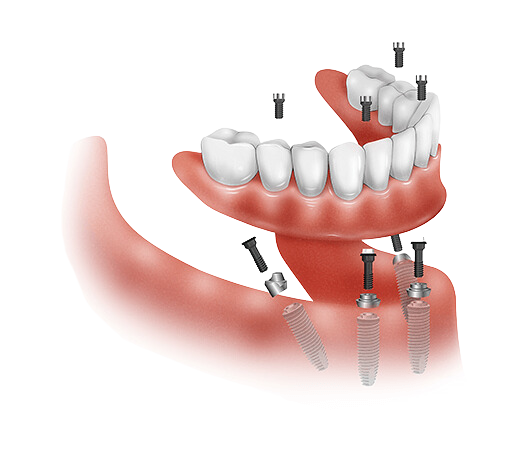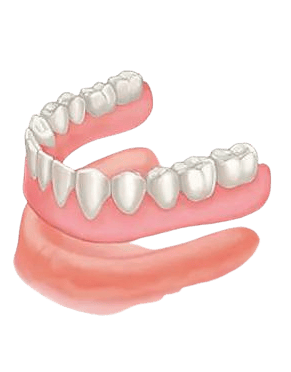

Full mouth implant bridges are a permanent, fixed solution for replacing all missing teeth in the upper or lower jaw. These bridges are supported by multiple dental implants, providing superior strength, function, and aesthetics compared to removable dentures. They restore natural chewing ability, improve speech, and enhance overall oral health, giving you a confident smile that looks and feels natural.
While All-on-4 or All-on-6 treatments use fewer implants (typically 4 to 6 per arch) to support a hybrid denture, full mouth implant bridges utilize a greater number of implants (minimum 8 per jaw) to provide enhanced stability and durability. This approach results in a more natural-looking and longer-lasting solution, especially beneficial for patients who want the most secure and lifelike replacement for their teeth.
For a full mouth implant bridge, a minimum of 8 implants per jaw is recommended to ensure optimal support and even distribution of biting forces. This number may vary based on bone quality, jaw size, and individual needs. More implants mean better long-term success and durability, allowing you to enjoy a worry-free smile for years to come.
Dental implant surgery may be done as an out patient procedure under local anaesthesia or in-patient sedation procedure. You are able to discss with your implant dentist on available sedation options. >> need to rephrase this
If you have significant bone loss due to prolonged tooth loss or gum disease, bone grafting may be required to create a stable foundation for implant placement. This procedure involves adding bone material to areas with insufficient volume, promoting better implant integration for long-term success.
For upper jaw implants, especially in the back of the mouth, a sinus lift may be needed if there is not enough bone height. This procedure raises the sinus membrane and adds bone material to ensure proper implant support, giving you the best possible results.
To keep your full mouth implant bridge in excellent condition, follow these simple steps:

{Detail}

{Detail}